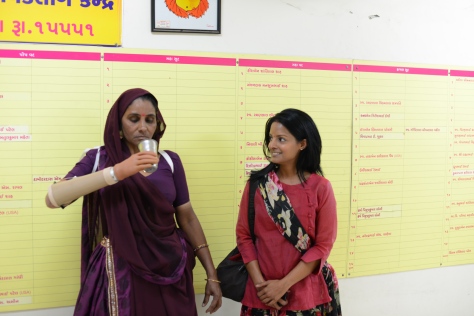 For all of the real economic progress that India has made, poverty and hardship are harsh realities for many Indians. A recent story in the German magazine Spiegel is a rather merciless illustration of the gulf between have and have-nots.
For all of the real economic progress that India has made, poverty and hardship are harsh realities for many Indians. A recent story in the German magazine Spiegel is a rather merciless illustration of the gulf between have and have-nots.
There are government services and social aid but a variety of corruption and inefficiency means squandered resources. Indifference is both a coping mechanism to deal with the vastness of the need and a tool for some individuals to be able to simply concentrate on what they personally can be responsible for.
Earlier this month, I visited a facility run by the Bharat Vikas Parishad which manufactures artificial limbs for the poor. My dad had made a contribution to them in my grandmother’s name and he received a letter asking him to be there to help present a limb to a handicapped person. Since I was here in Ahmedabad, Dad asked me to go.
We weren’t sure what to expect. Was this to be a formal ceremony of donors and recipients? It turns out that most Sundays the group hosts an open house of sorts where disabled people are welcome to come in and get fitted for prosthesis. The Parishad puts up fliers at temples and in other public areas advertising the service. (It also runs a mobile facility that travels out to rural parts of the state.) When the limb is ready, the recipient travels to Ahmedabad for pickup. This was the point of the letter and on this particular Sunday, things were, not atypically, running late.
So we visited with Praful Velani and about half a dozen of his fellow trustees who gathered to discuss charity business over masala chai. He gave us a tour of the place. Artificial legs and hands painted a mocha brown to resemble Indian skin tones were scattered about. He showed us an oven used to heat the limb’s final shape in place, a swastika painted on its door to bless its operation. 
The group’s main charitable effort is providing the limbs and they seemed earnest in their desire to help out fellow Indians who were less fortunate. One of their projects is a sort of matchmaking service where they try to encourage marriages between disabled young people. “Many of these young men earn good salaries and would provide a good home,” he said. For the young women, such a marriage could be a lifeline. It is often toughest convincing the parents of disabled girls, he said, as they are used to considering them “damaged” and of no use to society since a “normal” family wouldn’t consider them eligible to marry their sons.
The group has given 1,100 people an artificial limb in the last year and its estimates that about 1 million people in India don’t have a hand or a leg. We then met Kantaben Rabari from the village of Jetpur, about 150 kilometers away. She’s 35 and a housewife, and she had lost her right arm in an accident. My family’s donation was used to build her a new arm. As she tried it on, she wiggled the new fingers as she tried to loosen the bracket that controlled them so she could sip from a cup of water, and I was humbled to meet her.
